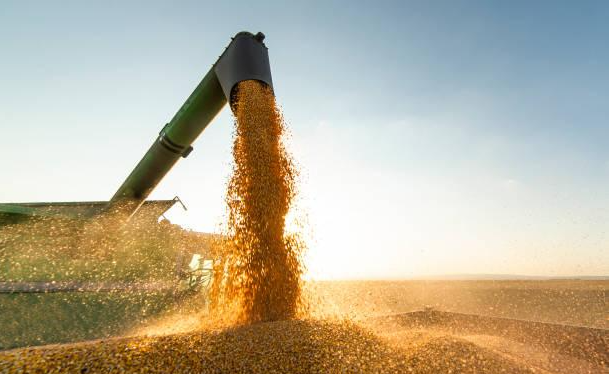The Economic Impact of Soy: Examining The Global Market

You have stimulated global economic growth as a soy farmer, trader, or consumer. The importance of Soy has, for many years, primed the global economy. Soy is a versatile crop with many applications throughout diverse industries, including animal feed, biotech, and gasoline.
You and other soy farmers in exclusive sector elements concentrate on soybean cultivation because it provides an excellent protein source for farm animals’ feed and human consumption. Moreover, soybeans supply numerous merchandise for soy traders like you, along with tofu, milk replacements, flour, and even biofuels utilized in transportation.
The fast-developing call for Soy in rising economies like China has led to widespread adjustments in agricultural trade policies internationally and improved investment globally, with international locations like Brazil becoming fundamental exporters.
Hence, this article aims to highlight your impact on the global financial system and the ability of Soy to affect international agricultural alternate rules and economic growth.
Analysis of Soy’s Impact on GDP and Employment
You most likely know someone who has been employed by Soy either directly as a farmer or indirectly as a soy trader. Your income and that of your community have increased since the assent of the soy boom. Soy has significantly increased many countries’ gross domestic product (GDP) and employment.
The manufacturing of Soy provides you with direct employment opportunities as a farmer, investor, or worker involved in processing it. In addition, Soy gives you protein and is used as feedstock for livestock, contributing to the increase in the beef industry.
Furthermore, soybeans are widely utilized in animal feed, vegetable oil, and other merchandise consisting of tofu, milk substitutes, and sauces. There is a high chance of you picking a soy product from the shelves when you’re out shopping. Therefore, multiplied call for soy merchandise interprets into more process possibilities along its fee chain.
Moreover, the profits you have garnered due to the boom in the manufacturing and exportation of Soy undoubtedly contribute to your country’s GDP. If you live in Brazil, your country has appreciably benefited from this commodity due to the favorable weather conditions in your motherland, allowing huge yields consistent with cultivated hectares.
Overall analysis indicates that Soy’s effect on GDP and employment emphasizes its capability contribution to economic improvement when managed sustainably with a focal point on optimizing acceptable consequences throughout all tiers inside the global soy supply chain. Soybean contributes to many nations’ gross domestic product (GDP).
For instance, soybean production contributed significantly to Brazil’s GDP growth in 2016 (at $31.6 billion). The United States exported a record $25.7 billion of soybeans in 2020.
Examination of Major Soy-Producing Countries and Their Economies
If you live in the top soybean-generating countries: the USA, Brazil, Argentina, China, and India, soy manufacturing has become a significant economic motive force for your nation. These countries have massive land regions suitable for growing soybeans, access to superior technology and agricultural inputs, and government help programs that enable you to produce Soy at scale.
This has led to establishment of significant agricultural structures within these nations, often geared toward exporting the crop as a commodity. The United States, Brazil, and Argentina are the leading soy-producing nations, accounting for over ninety percent of worldwide soybean production.
Brazil is the arena’s largest exporter of soybeans, and its soybean industry has a tremendous impact on the United States of America’s economy, with 75.4 million metric tons of soybeans exported in 2019, producing $33.2 billion in income. However, you should be concerned. The soybean industry boom has raised environmental worries about deforestation and land degradation.
Review of Current Trends and Future Projections in Soy Trade
As a soy trader, you must stay up-to-date with cutting-edge marketplace trends to maintain a competitive edge in today’s rapidly evolving global financial system. The market is currently defined by fast technological advancements and shifts in consumer behavior, compelling business owners like you to adopt modern strategies that meet changing demands.
It would be best if you focused on key drivers such as sustainability, customer experience, and online presence influencing future projections. These elements are anticipated to form the course of commercial enterprise operations in the coming years, with organizations leveraging technology and statistics-pushed insights as equipment for success.
Disruptive innovation will create new opportunities while posing a chance of obsolescence for companies if you fail to stay ahead of rising tendencies. To navigate these demanding situations correctly, you need to remain vigilant, flexible, and forward-wondering in your technique for strategic planning and execution.
Meanwhile, the global soybean market is projected to grow, driven by increasing demand for soybean products in the food, feed, and biofuel industries. The global soy protein market has been predicted to develop at a compound annual growth rate of at least 3% from 2019 to 2025, as Grand View Research, Inc reported.
Implications for Small-Scale Farmers and Local Communities
The implications for you as a small-scale farmer and your nearby communities are sizable in the context of agricultural development. You often face many challenges, including access to resources, expertise gaps, and climatic uncertainties.
In this regard, promoting sustainable agriculture practices through schooling applications can beautify your capacity to produce food while minimizing environmental harm. Local communities also can gain from such projects by generating employment opportunities in rural areas and strengthening nearby economies.
Furthermore, you can contribute to accomplishing food security and alleviating poverty in these neighborhood communities by practicing sustainable soy farming. However, it would be best if you exercise caution when implementing guidelines that might inadvertently exacerbate land degradation or inspire unsustainable agricultural practices.
Hence it would be best if you interacted with nearby groups involved in developing strategies that align with your dreams, aspirations, and long-term vision.
Closure
Soy is a crucial element in worldwide financial development, as it’s widely applied in many industries, notably as a supply of protein in animal feed and meal production. If you’re a citizen of countries of America, Brazil, and Argentina, you have become the most critical players in soy production, with the crop contributing notably to your respective GDPs.
Soy also plays an essential role in sustainable agriculture, appearing as a herbal source of nitrogen fixation and enhancing soil fertility. Furthermore, the versatility of Soy has brought about its use in numerous other industries, such as biofuels and cosmetics.
The international call for Soy continues to push upward due to its dietary benefits and affordability, making it a crucial commodity for you and your country. As such, the importance of Soy in international monetary development cannot be overstated, especially given its position as a pivotal contributor to food safety and sustainable enterprise practices.








